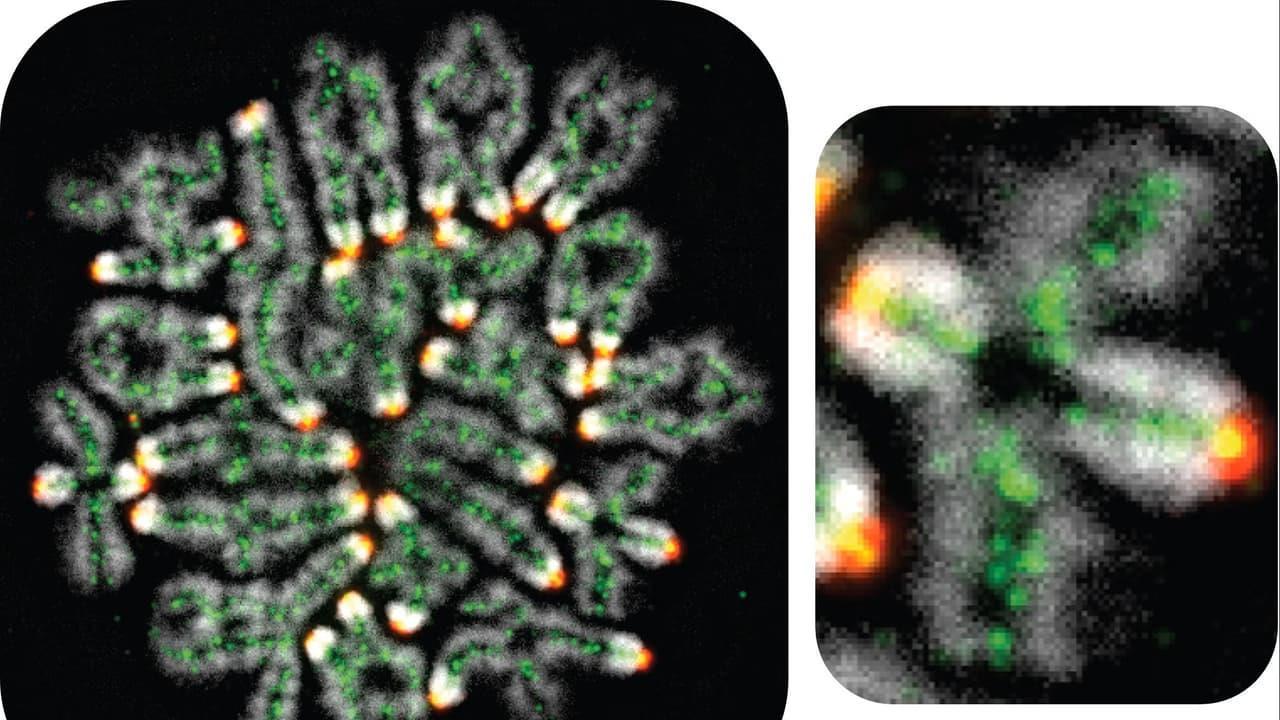Hidden DNA Process May Explain Infertility, Miscarriages, And Down Syndrome
A quiet but critical DNA process that begins even before birth may hold the key to understanding infertility, recurrent miscarriages, and genetic conditions like Down syndrome. Researchers at UC Davis have uncovered how networks of proteins safeguard chromosomes during the formation of eggs and sperm - a discovery that could help explain why reproductive failures occur and eventually lead to better fertility treatments.
The fragile beginnings of life
When a baby girl is still developing in the womb, her ovaries are already forming the egg cells she may one day use to conceive. Each egg's chromosomes - the bundles of DNA that carry genetic instructions - must be cut, swapped, and stitched back together with near-perfect accuracy. In boys, the same process happens later, after puberty, when sperm begin to develop.
“If that process goes wrong, you end up with the wrong number of chromosomes in the eggs or sperm,” said Neil Hunter, professor of microbiology and molecular genetics at UC Davis.“This can result in infertility, miscarriage, or the birth of children with genetic disorders.”
In a study published September 24 in Nature, Hunter's team pieced together how special protein“safety nets” keep chromosomes properly connected and sorted as reproductive cells form.
Why crossovers matter
Humans inherit 23 pairs of chromosomes - one set from each parent. During egg and sperm formation, these pairs line up and swap DNA in events called“crossovers.”
Crossovers serve two crucial purposes:
They shuffle genetic material, creating unique combinations for the next generation.
They act as molecular glue, keeping paired chromosomes tethered together until they are correctly divided.
In women, these tethered pairs must often hold on for decades - from fetal development until ovulation in adulthood. If they lose their grip, the resulting eggs can carry extra or missing chromosomes, raising the risk of miscarriage or conditions such as Down syndrome.
Watching chromosomes in action
To unravel how these delicate connections are protected, Hunter's team turned to budding yeast, a simple organism that shares many of the same DNA processes as humans. Using genetic engineering and a technique called“real-time genetics,” the researchers could selectively remove proteins and observe how crossovers formed or failed.
They found that proteins such as cohesin act as guardians, preventing another enzyme - the STR complex (known as the Bloom complex in humans) - from dismantling the crossovers too early.
“They protect the double Holliday junction,” said Hunter, referring to the DNA structure where crossovers occur.“That's a key discovery.”
From yeast to fertility medicine
Because the crossover process has changed very little through evolution, the findings in yeast offer valuable clues about human reproduction. A failure to properly maintain these chromosome connections could explain why some women experience infertility or repeated pregnancy loss, and why older mothers face higher risks of chromosomal errors.
“This strategy allowed us to answer a question that wasn't possible before,” Hunter said.“It's giving us a clearer picture of how reproduction is safeguarded at the molecular level.”
The research was a team effort involving UC Davis undergraduates, postdoctoral scholars, and collaborators, with support from the National Institutes of Health, the Howard Hughes Medical Institute, and several foundations.
While the study is still at the basic science stage, it opens the door to potential advances in fertility care. By better understanding how chromosome crossovers succeed - or fail - researchers may one day be able to diagnose risks earlier, improve fertility treatments, or reduce the chances of genetic errors in pregnancies.
As Hunter puts it:“These are some of the most fundamental steps in creating life. If we can understand how they go wrong, we can start to imagine ways to make them go right.”
Legal Disclaimer:
MENAFN provides the
information “as is” without warranty of any kind. We do not accept
any responsibility or liability for the accuracy, content, images,
videos, licenses, completeness, legality, or reliability of the information
contained in this article. If you have any complaints or copyright
issues related to this article, kindly contact the provider above.
Most popular stories
Market Research

- Alt.Town Introduces $TOWN Token Utility Across Platform Services And Launches Valuefi Deposit Event
- BTCC Exchange Maintains 143% Total Reserve Ratio In September 2025 Demonstrating Continued Financial Strength
- Salvium Solves The Privacy Paradox: Salvium One Delivers Mica-Compliant Privacy That Exchanges Can List
- Zebu Live 2025 Welcomes Coinbase, Solana, And Other Leaders Together For UK's Biggest Web3 Summit
- Tapbit At TOKEN2049: Reshaping The Crypto Landscape Through Product Innovation
- Thrivestate Launches“Fly Before You Buy” Program, Enabling International Buyers To Explore Dubai Before Committing






















Comments
No comment